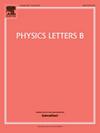Why do newer degrees of freedom appear in higher-order truncated hydrodynamic theory?
IF 4.5
2区 物理与天体物理
Q1 ASTRONOMY & ASTROPHYSICS
引用次数: 0
Abstract
An exact derivation of relativistic hydrodynamics from an underlying microscopic theory has been shown to be an all-order theory. From the relativistic transport equation of kinetic theory, the full expressions of hydrodynamic viscous fluxes have been derived which turn out to include all orders of out-of-equilibrium derivative corrections. It has been shown, that for maintaining causality, it is imperative that the temporal derivatives must include all orders, which can be resummed in non-local, relaxation operator-like forms and finally ‘integrated in’ introducing newer degrees of freedom. The theory can of course be truncated at any higher spatial orders, but the power over the infinite temporal sum increases correspondingly such that the causality is respected. As a result, the theory truncated at any higher order of spatial gradient, requires newer degrees of freedom for each increasing order.
为什么在高阶截断水动力理论中出现了新的自由度?
相对论流体力学从一个基本的微观理论的精确推导已被证明是一个全阶理论。从运动理论的相对论输运方程出发,导出了流体动力粘性通量的完整表达式,它包含了所有阶的非平衡导数修正。已经证明,为了保持因果关系,时间导数必须包含所有阶数,这些阶数可以以非局部的、类松弛算子的形式恢复,并最终“整合”引入新的自由度。这个理论当然可以在任何更高的空间阶上被截断,但是对无限时间总和的权力相应增加,从而使因果关系得到尊重。因此,在任何高阶空间梯度上截断的理论,每增加一个阶都需要更新的自由度。
本文章由计算机程序翻译,如有差异,请以英文原文为准。
求助全文
约1分钟内获得全文
求助全文
来源期刊

Physics Letters B
物理-物理:综合
CiteScore
9.10
自引率
6.80%
发文量
647
审稿时长
3 months
期刊介绍:
Physics Letters B ensures the rapid publication of important new results in particle physics, nuclear physics and cosmology. Specialized editors are responsible for contributions in experimental nuclear physics, theoretical nuclear physics, experimental high-energy physics, theoretical high-energy physics, and astrophysics.
 求助内容:
求助内容: 应助结果提醒方式:
应助结果提醒方式:


